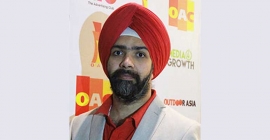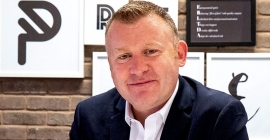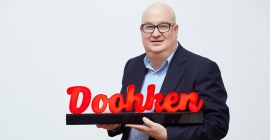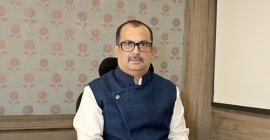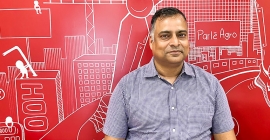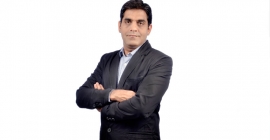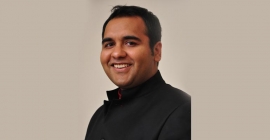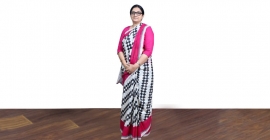‘pDOOH is truly transformational’
By Bhawana Anand - November 25, 2019
Programmatic DOOH is still finding its ground in the conventional dominated Indian OOH Industry. However, it is expected to transform the DOOH ballgame, says Gulab Patil, Founder & CEO of Lemma Technologies. Edited excerpts of the interview
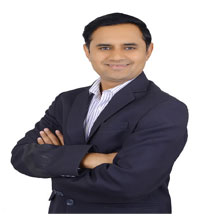 Programmatic actually makes the OOH medium more accessible and addressable. Do you see this happening in India with the advent of programmatic?
Programmatic actually makes the OOH medium more accessible and addressable. Do you see this happening in India with the advent of programmatic?
The core function of programmatic technology is to bring in ease and automation along with accountability and measurability, at scale. With the implementation of programmatic technology for DOOH screens we are seeing changes not just in the way DOOH is being transacted but also how DOOH evolves into a novel medium for brands to explore.
A major change that we have witnessed this year is the introduction of real time marketing campaigns which wasn’t a possibility with OOH screens earlier. To quote an example, Sony Pictures used programmatic technology to activate dynamic banners in real time sync with the weather conditions. Another prominent shift would be in terms of media buying, where the focus is more on audience buying rather than screen buying, a possibility available for OOH with programmatic technology.
The biggest challenge with programmatic is that a lot of professionals from the industry and the client side still don’t understand what it is. How would you tackle this challenge?
Programmatic is a common term that the digital and online industry professionals are familiar with. However, Programmatic DOOH remained an unheard and unconventional media channel till about early this year, before we launched the first campaign in January 2019.
Since Programmatic DOOH holds relevance to both the online and offline media planners, we now work in collaboration with both teams in an integrated fashion to resolve any doubts that either of the two may have. This integrated approach has helped us execute campaigns for OOH agencies in partnership with their internal programmatic wing. This is a win-win situation for all involved.
Lemma Technologies has a complete platform for DOOH. Which of the avenues have you tapped into until now?
Our platform provides advertisers with a variety of audiences across various clusters. We have clusters like pubs, cafes and restaurants that help brands connect with the Millennials and young Indians, a TG that is most sought after by the brands. We have screens across railways and Metros stations, considered the lifeline for suburban travellers and daily commuters. We help brands connect with working professionals via DOOH screens at corporates parks and IT hubs.
Apart from this, Lemma is present at many other avenues including clinics, malls, hospitals, digital billboards, modern retail outlets and many such prominent locations across the country.
In addition, we cover DOOH screens in international locations , such as, in Indonesia, Malaysia, Qatar, Australia and New Zealand.
Even today the major chunk of spends go to conventional OOH formats. How do you justify the complete outdoor plan?
Programmatic DOOH in India is still in its infancy and has a long path to tread. Currently, DOOH spends account for only 3% of the total OOH spends in India, but this scenario would undergo a considerable change with the adoption of pDOOH as an integral part of the media plans. Moreover, smart cities projects and other infrastructural development would only facilitate and foster the growth of this medium in the years to come, making DOOH an indispensable part of any media plan. In the long run, OOH would be synonymous with DOOH, like what the western and more evolved countries are already experiencing today, where DOOH spends account for 50% or more of the total OOH spends.
Programmatic outdoor advertising will work best when the complete data is on a common platform. But considering the diversified nature of Indian OOH industry nature, do you really think that is possible? Do you have plans to add static media data on your platform?
Programmatic technology is only applicable to the digitised platforms with internet connectivity and hence applying the same to static OOH is out of the question. However, the intention Is to onboard all DOOH formats on to our platform, making it an end-to-end programmatic solution for advertisers and media planners.
Addressing the point of how important data is, well data is core to any programmatic platform and the case is no different for pDOOH. The Lemma platform has been built to ingest vast amounts of data through IoT beacons, Lat-long information and third-party data to enable advertisers to target the right set of audiences, utilising the right screen at the right time.
More than data centralization, pDOOH is currently a very unorganised segment with no standardisation implemented for pricing or measurement. This is the primary area of focus that would help transform this medium to a mainstream media channel.
You have been partnering with a few outdoor media owning and solutions firms. How are the partnerships turning out for you and your partner firms?
Partnering with the DOOH media solution providers is enabling us to build a DOOH programmatic ecosystem with screens that are programmatic ready. In other words, we together with our partners are ensuring that all digital screens have a default programmatic setting that can be monetised and activated at any given time. This helps us extend our offerings and inventory to our clients. For our partners, having this technology in-built serves as a differentiator over competition, given that screen owners can now easily become a part of the US$350 billion digital ad industry because they are programmatic enabled screens.
How has been the response of OOH specialist agencies on programmatic? Some agencies have in-house tools as well. How do you compete with them?
Surprisingly, many of the OOH specialist agencies are very excited about programmatic DOOH. They see this as a medium that not only offers innovation but also as a channel to enhance their OOH media offerings. Kinetic India, one of the largest OOH agencies conducted a workshop to educate media owners about this revolutionary change in DOOH advertising. A similar response was also seen with the Madison OOH team.
The in-house programmatic team, largely a function of the online media, is also receiving this positively. We aren’t competing with them but are finding solutions that enable us to work in sync. We have integrated our platform with their internal platforms in many cases and have seamlessly delivered successful campaigns on the pDOOH screens.
Could you please mention some of the brands and agencies that are using your platform?
We have worked with several agencies like WPP, Dentsu Aegis Network, Omnicom Media Group, Publicis Media and have worked with brands managed by them like SBI, Asian paints, HP Chromebook, Sony Pictures and many more.
What challenges do you face in the Indian DOOH market?
Unconventional mediums always take longer to be recognised and accepted and the case is no different for DOOH advertising. From my experience with brands, agencies and advertisers I have come to identify two major challenges. One, the lack of knowledge of DOOH as a medium. Two, where does it belong -- offline or online.
What are your expansion plans?
Now Lemma has progressed tremendously in India, South East Asia, Australia and New Zealand. We will have presence in at least 20 countries including US and Europe by December 2020.
In terms of product enhancement, we would want to integrate the live tracking mechanism allowing planners to gauge the audience density and profile in real time thereby delivering robust media plans instantly.

Stay on top of OOH media trends

